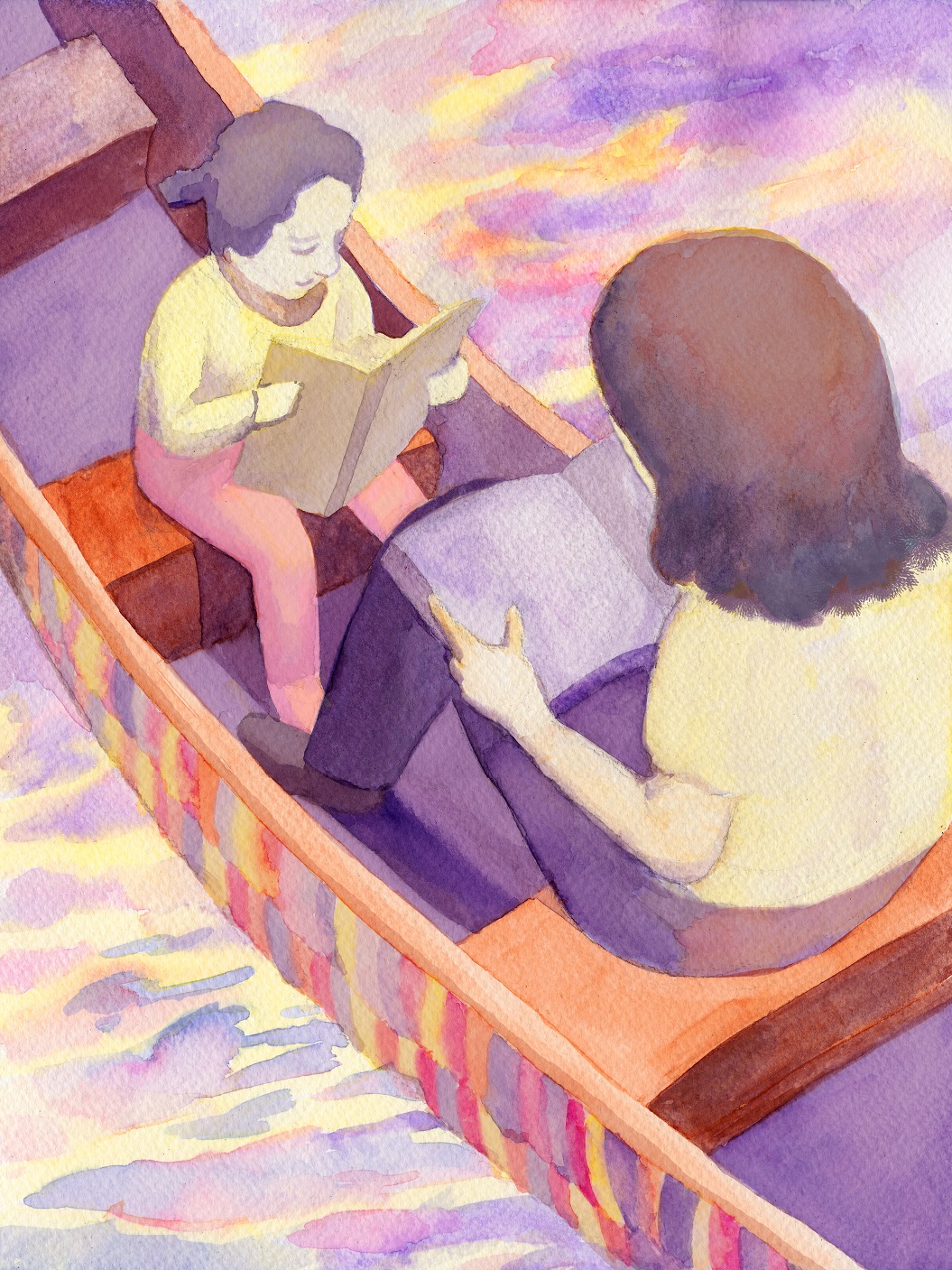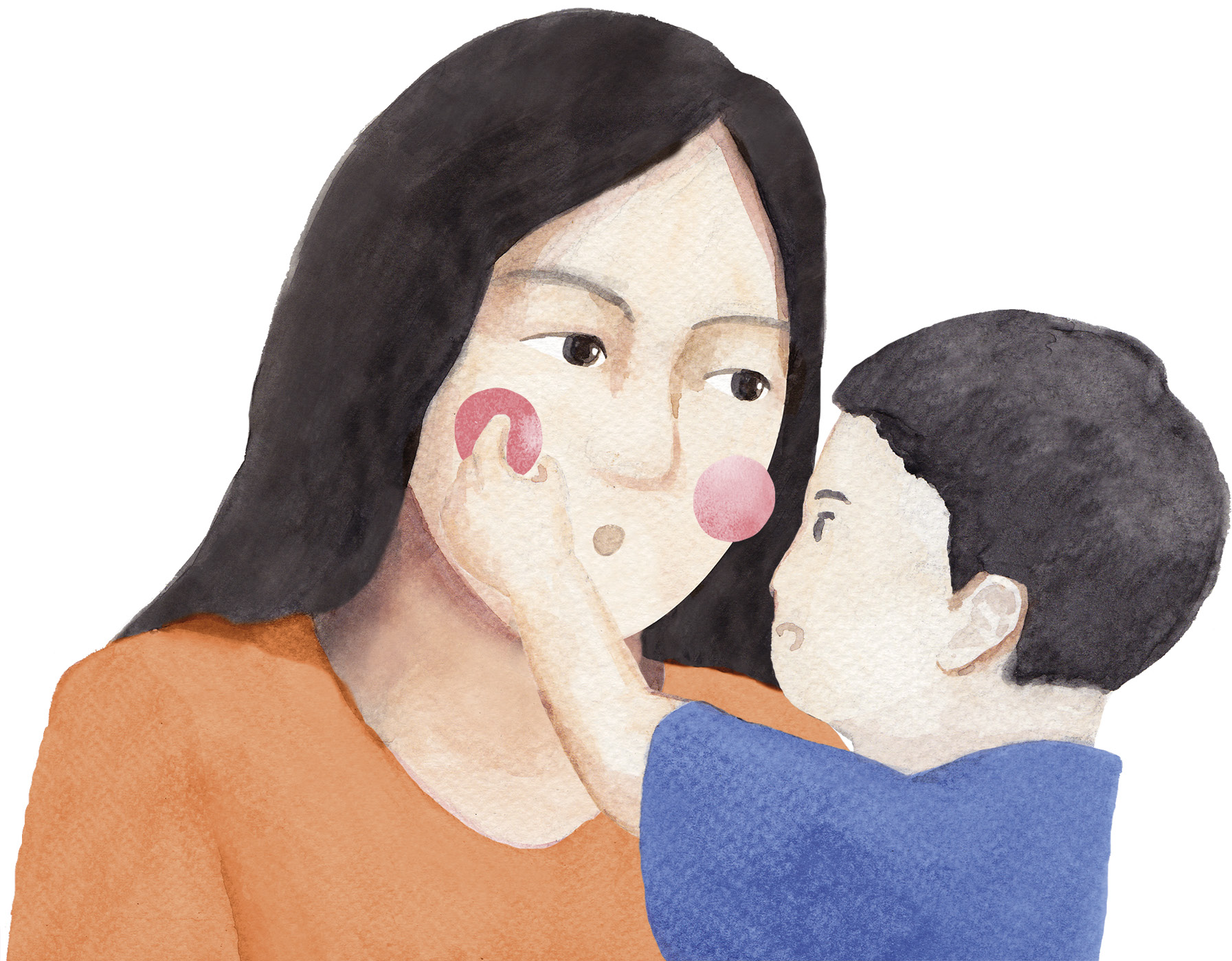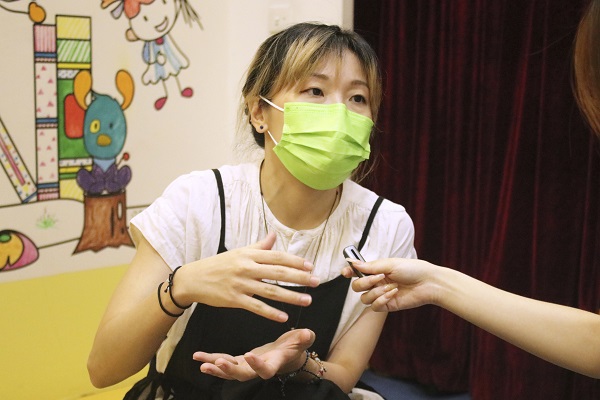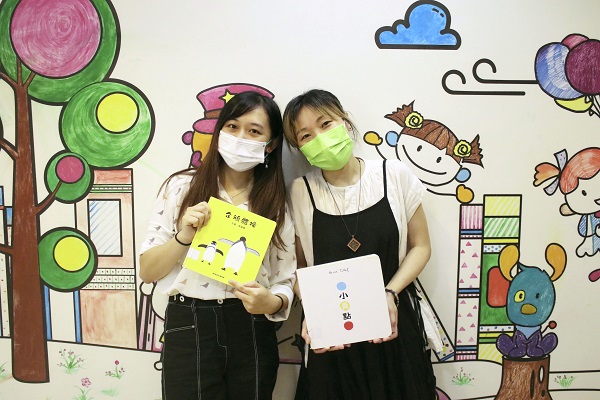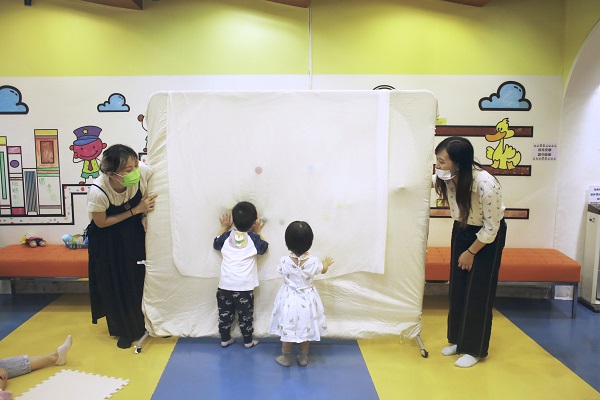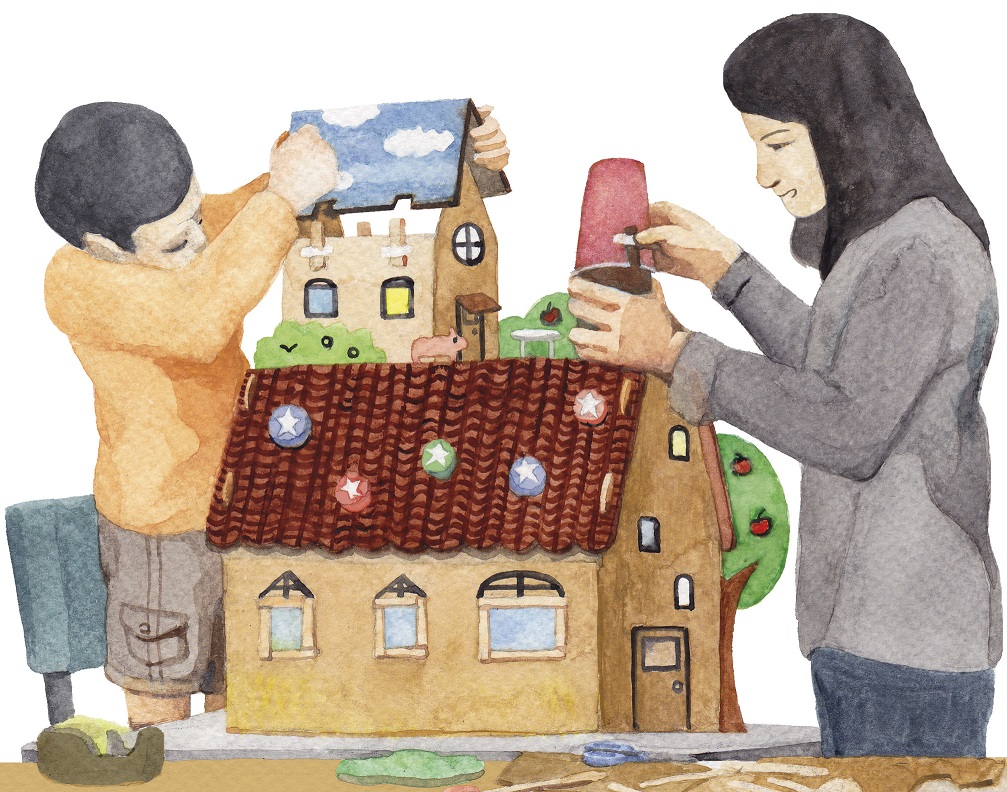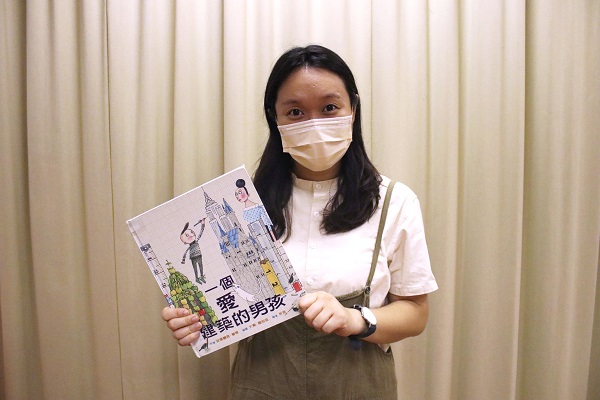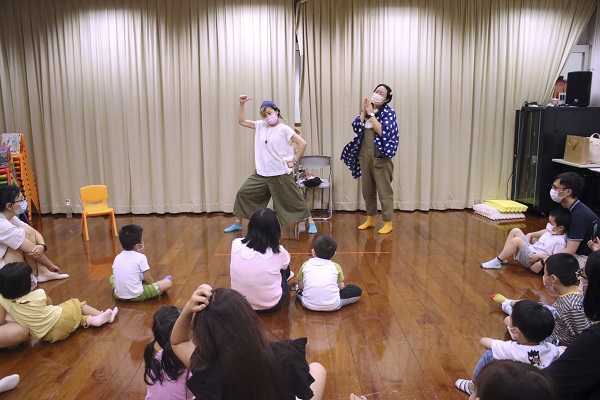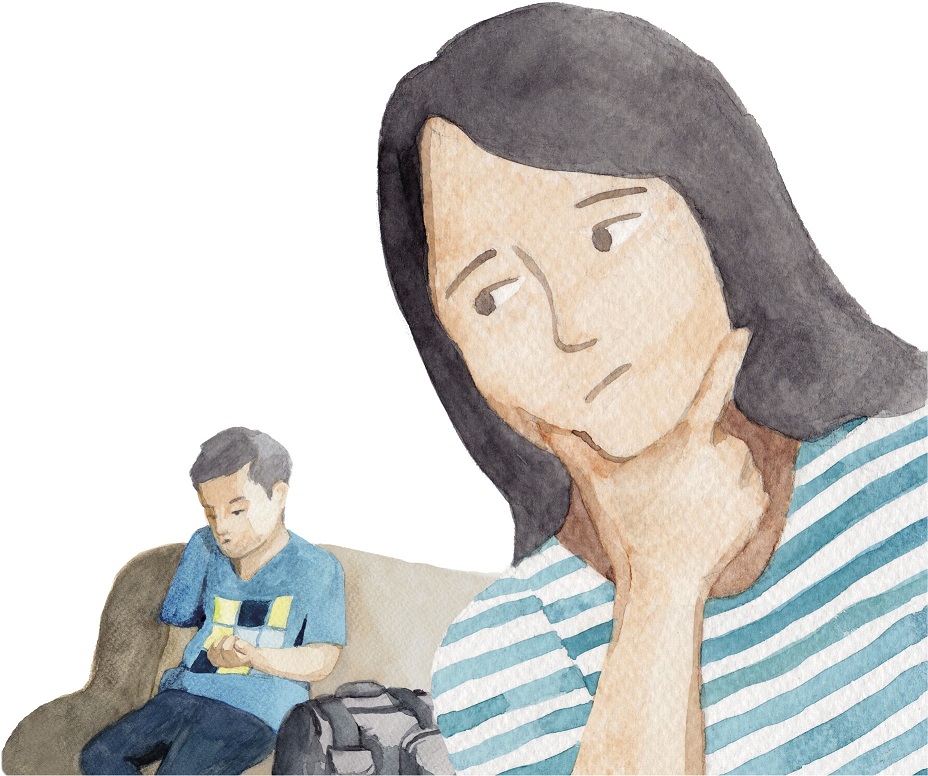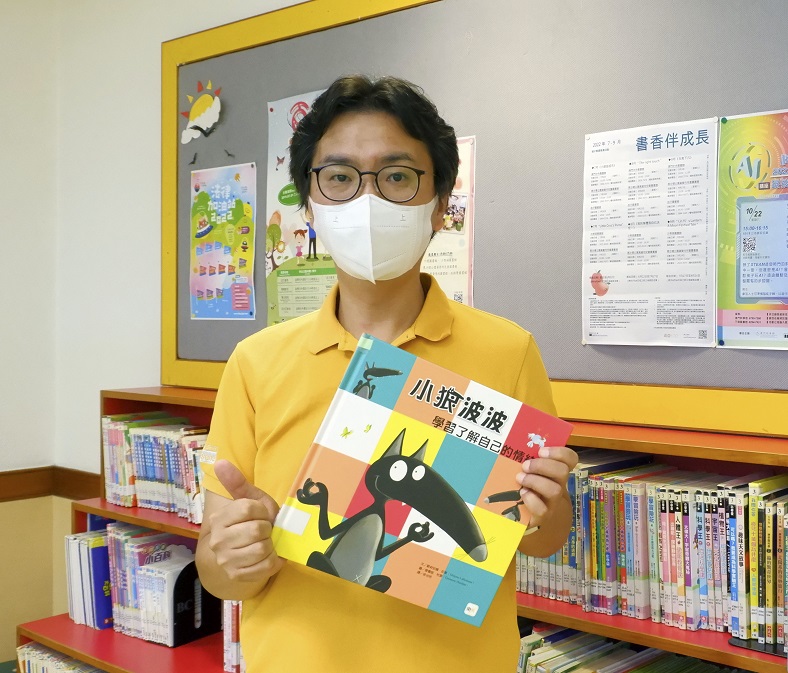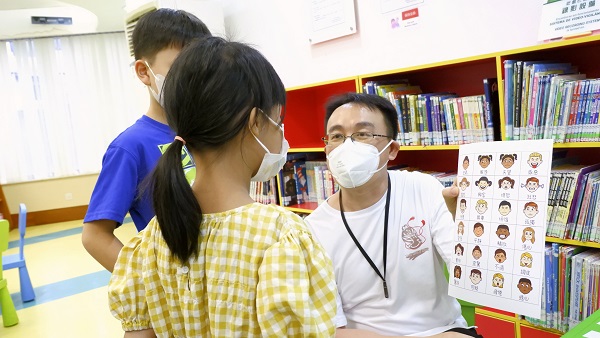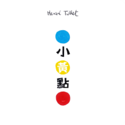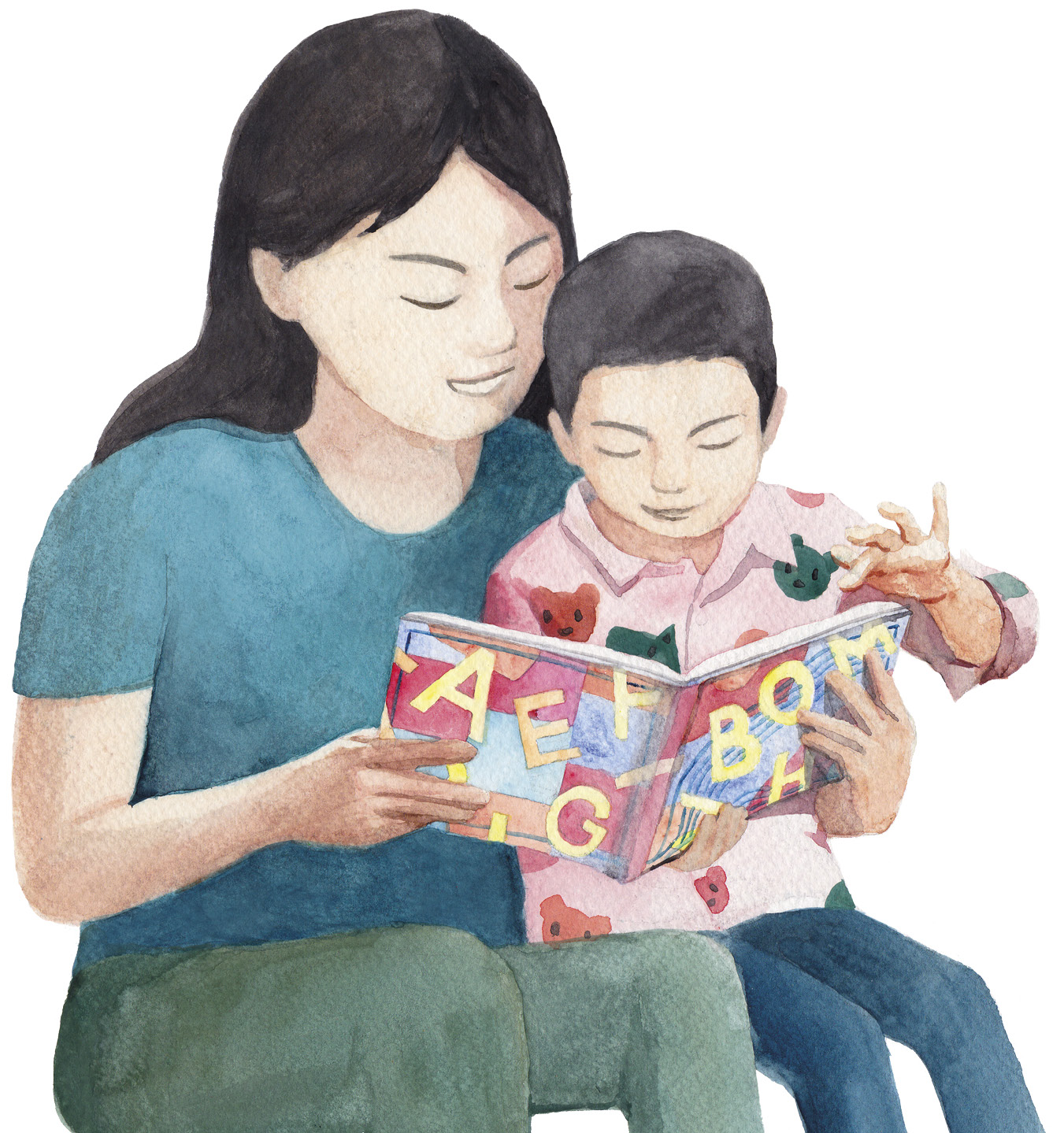
Let’s read English picture books together today, kids! Last time, our teacher said that young children’s brains are very active when they are between the ages of 0 and 6, so, at this stage, it is important to combine elements including foreign language and drama in telling picture book stories, to develop children’s foreign language and reading skills. As it happens to be the Mid-Autumn Festival, the library organized a parent-child reading promotion activity “Reading Promotes Growth”. The activity includes the reading of English picture books which are specifically chosen for the Mid-Autumn Festival, and parents and children can read and make lanterns together. Come on in! The event is about to start. Instructor Jose Ku is waiting for us.
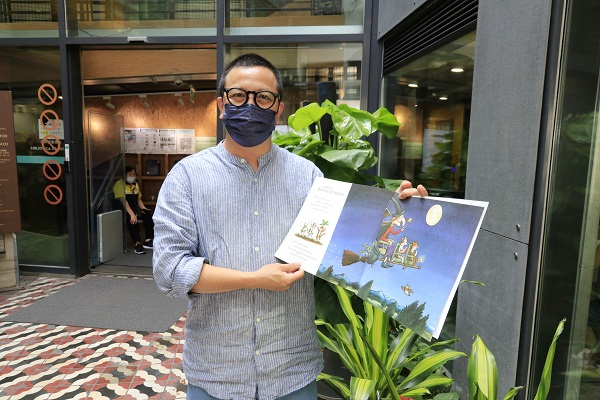
Jose Ku, the instructor of the parent-child reading promotion activity “Reading Promotes Growth”, encourages parents and children to interact with each other in the form of “reading + drama”.
“When reading picture books with children, the key point is not about how the parents ‘tell’ the story, but about how they lead the children into the world of the book. Parents and children should ask and answer each other questions more frequently for the children to understand the plot of the book, and even to associate different scenarios, so that their children can put their thoughts and emotions into the story characters.” On the day of the workshop, the instructors started with a warm-up activity to help parents and children relax and get used to the pace of the workshop. Children were introduced to the exciting world of picture books through body movements, and finally, they completed a craft session together with their parents to make lanterns for the Mid-Autumn Festival. According to Ku, this is an important part of “reading + drama”, “Let children play a story as spontaneously and impromptu as possible. When you consider reading to be a relaxing and enjoyable thing, it’s easy to interact even in English”, he claimed.
As for how to choose the right book as a blueprint for drama, Ku says that “reading + drama” is not limited to children’s picture books, in fact, poetry, famous picture albums, modern literature and novels, and even philosophy books can all build a theatre world for children. “The most important thing is to bring out the message of the book, so that the reading mind is stimulated and the art sense is nurtured”, he said. He encourages parents to make more use of the libraries to find reading materials and to accompany their children to travel through the sea of books by their theatrical performances, thereby experiencing the infinite joy of knowledge.
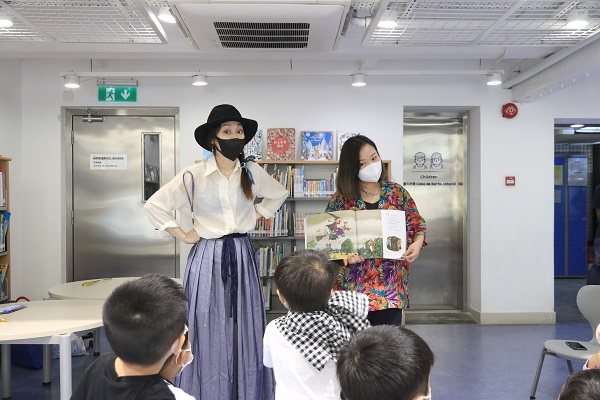
In 2022, the “Reading Promotes Growth” parent-child reading promotion activity spent the Mid-Autumn Festival with parents and children through the interpretation of English picture books.

